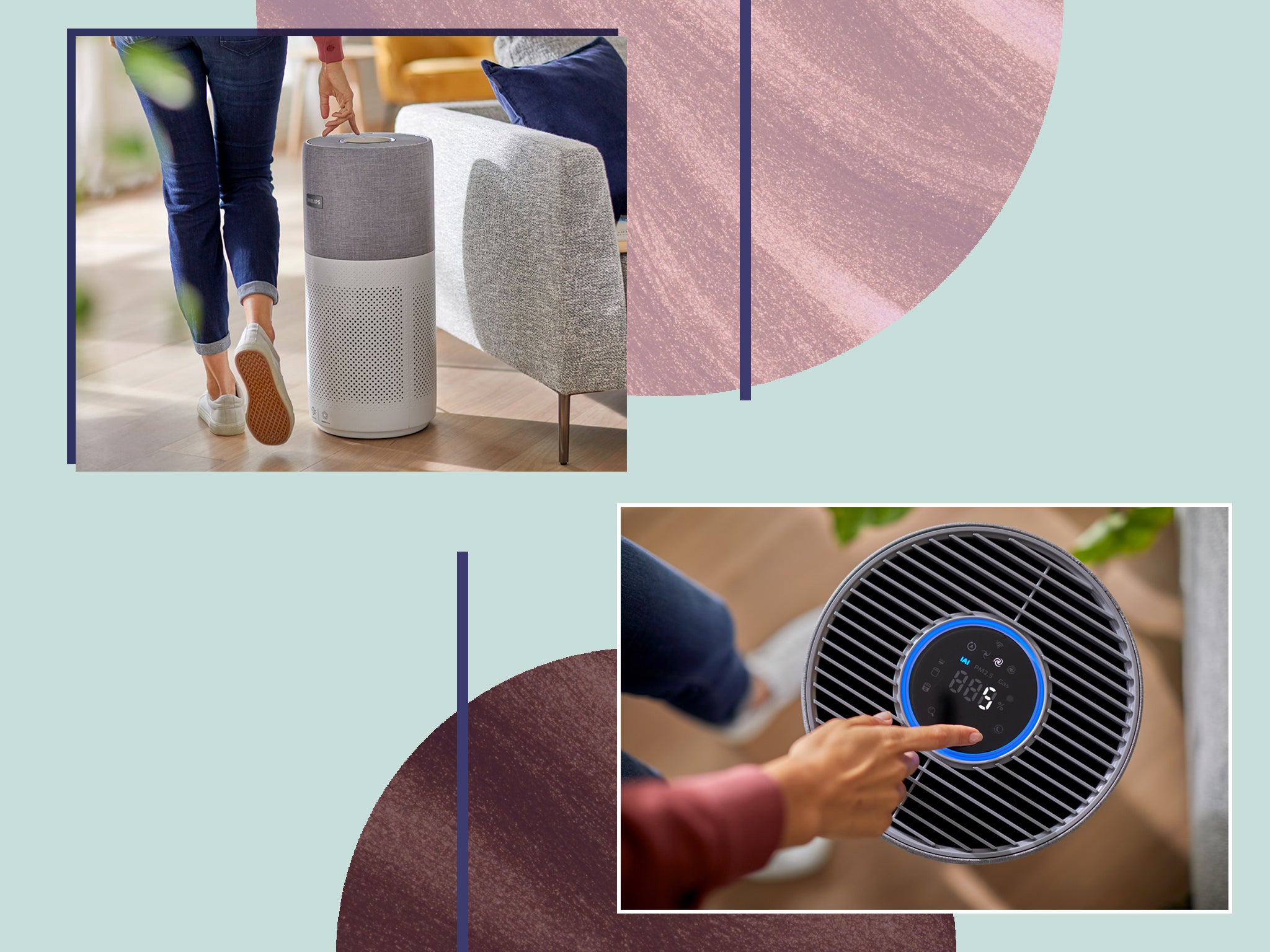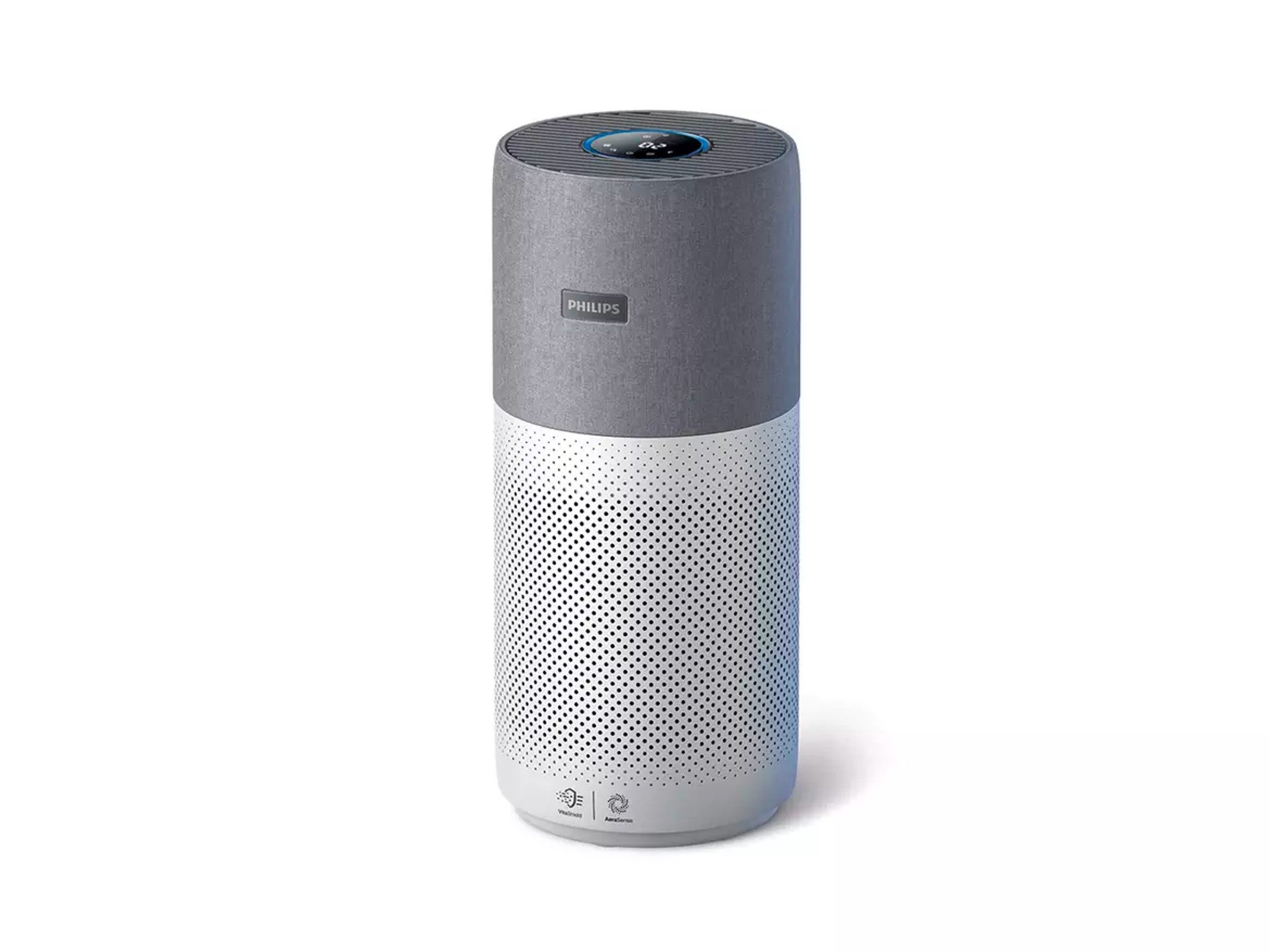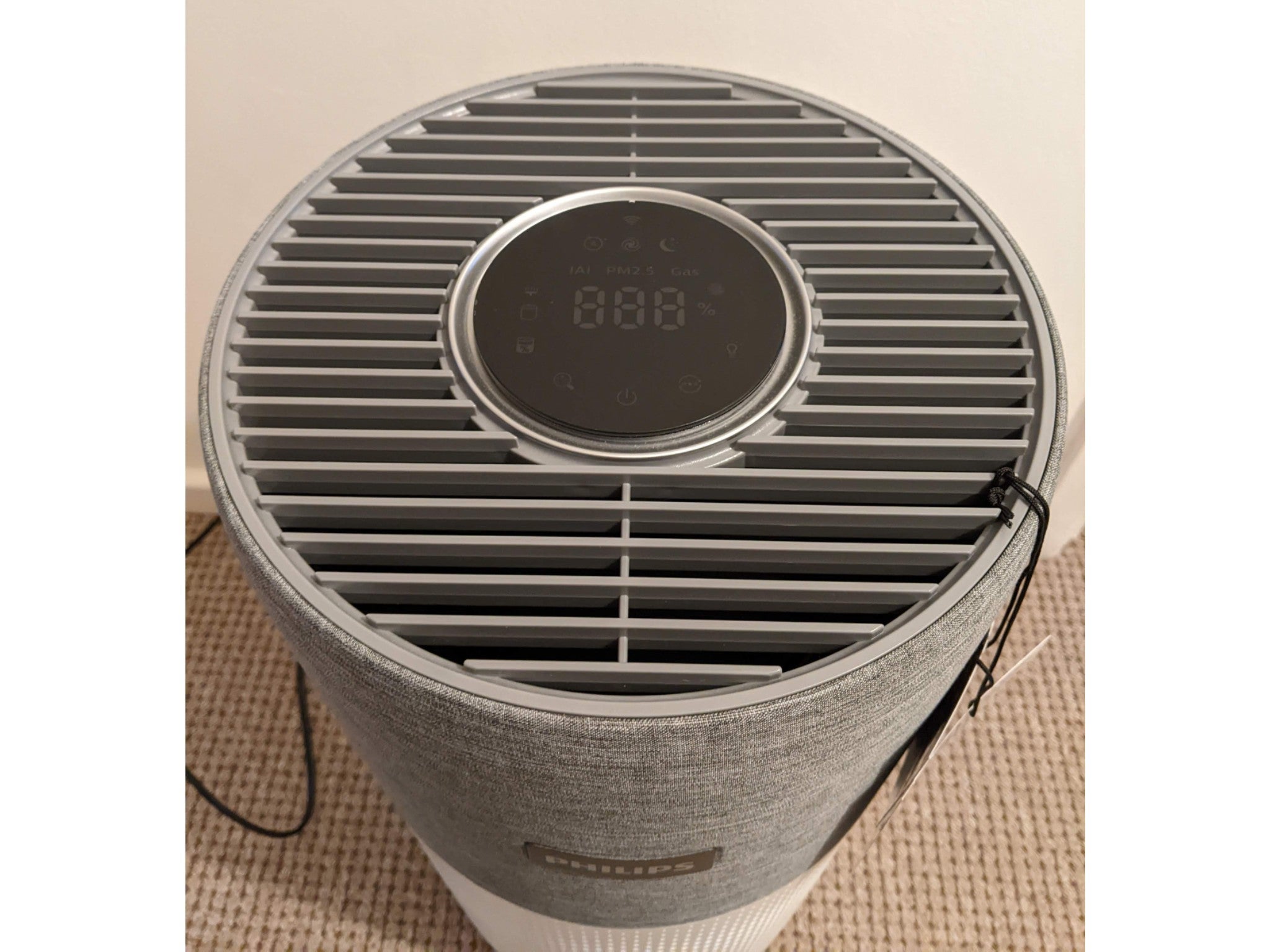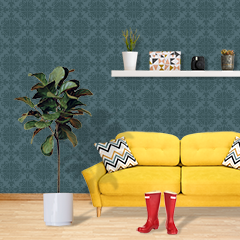The Independent's journalism is supported by our readers. When you purchase through links on our site, we may earn commission. Why trust us?
Philips expert series 3000i review: A refreshingly affordable air purifier
This whisper-quiet kit works hard on everything from pollutants to pollen and pet dander

Before the coronavirus pandemic, few of us would have paid attention to the quality of the air inside our homes. After all, most of our waking hours were spent at work and on commutes rather than inside our four walls. But when we were suddenly inside for months on end, often at close quarters with other people, indoor air quality became a serious concern to be addressed – and quickly.
It’s no wonder that sales for air purifiers have skyrocketed in the last couple of years, with one recent report estimating that the global market for these devices grew by £220million between 2020 and 2021, and will likely double by 2030.
Suffice to say, air purifiers are in serious demand – and perhaps none more so than the Philips AC3033/30 3000i expert series air purifier. In fact, we had to wait several months to get hold of a sample for testing because it kept selling out.
What’s so special about this device? Well, for starters, it achieves the hat trick of being incredibly effective, whisper quiet and energy efficient. It’s also easy to use and programme remotely. Plus, it’s much more affordable than similarly high spec air purifiers – and we’ve tested a few. Here’s why we’re gushing about this particular model.
How we tested
We spent several weeks putting the Philips AC3033/30 through its paces. This included trying out different settings on the device as well as moving it to different rooms to see how it would perform in different situations. We also looked at how easy it was to use and compared it with similar devices to determine value for money.
Read more:
Philips AC3033/30 expert series 3000i connected: £450, Argos.co.uk

- Fan setting: Four speed settings from sleep to turbo mode
- Quiet Mark certification: Yes
- Oscillation: No
- Remote control: Via mobile app, Alexa and Google Home
- Timer: Yes, with ability to create a weekly schedule
- Power: 55W
- Warranty: 2-year worldwide guarantee
- Weight: 6.8kg
- Height: 645mm
- Max width: 290mm
Design
Design-wise the Philips AC3033/30 is as simple as it gets – it’s a 645mm high cylinder with a diameter of 290mm. The bottom two thirds is made from perforated white plastic that allows air to be drawn in from all sides.
At the back, there’s a hatch that you can open up to install and remove the filter – this just slots in like placing a book on a shelf – while immediately above it is the sensor that detects the air quality in your home. There’s also a nook here that doubles as a handle to make picking it up easier. And on the bottom of the device there are raised grooves that make pushing it along on a hardwood floor pretty effortless – however there are no wheels, so those with carpets may need to lift it up.
Read more: 9 best air-purifying plants for a breath of fresh air
The top third is covered in a grey fabric around the sides, which gives the overall look a Scandi, minimalist feel. At the top, vents (outlet for the filtered air) surround a circular, touch-sensitive control panel. Unlike some of the other devices we’ve tested, you can pretty much do everything on this control panel, with the exception of setting a schedule. For that, you’ll need the app (more below).
Features
The Philips AC3033/30 is designed for rooms of up to 135sqm – the average UK living room is 17.09sqm – so this will comfortably suit most households and some businesses too.
Like other high spec air purifiers, the NanoProtect HEPA filter used in this device combines a high efficiency particulate air (HEPA) filter with an active carbon one. Together, they can remove 99.9 per cent of bacteria and viruses, as well as larger particles like pollen, pet dander and bad odours.
But it’s particularly efficient at it, as shown by the Clean Air Delivery Rate (how quickly it can clean the air) of 520 metres cubed per hour – the more expensive Blueair healthprotect 7470i only has a CADR of 475m³/hr.

The Philips AC3033/30 is able to achieve this efficiency by introducing an electrostatic charge to the particles it’s filtering out so that they’re captured by the filter much more easily. It means the machine doesn’t have to work as hard to achieve the same results as a traditional HEPA filter, and therefore it’s more energy efficient and quieter as well.
The control panel is pretty robust too. You can use it to toggle between four different fan settings – sleep, 1, 2 and turbo. Alternatively you can use the auto setting, which self-adjusts the fan speed according to the level of pollutants in the air.
At any point, you can check on the air quality in your home on the display as well as when you might need to replace the filter. There’s also a button to switch off the LED display, which is handy for nighttime use.
Read more: 7 best robot vacuum cleaners for effortless cleaning
Download the app and you can create usage schedules and personalise the filter experience to address your concerns, whether it’s primarily cooking odours or pollen and other allergens. It will also tell you when you need to clean the pre-filter, or replace the filter altogether. Plus, you can buy the replacement straight through the app.
Usage
In terms of use, the Philips AC3033/30 was pretty straight forward to operate. Our preferred setting was auto, which meant that we could set it and forget it. And by using the app, we were also able to easily create a schedule that switched the setting from auto to sleep at night time.
Basically, once it was set up, there was minimal fuss. But compared to other appliances we tested, connecting this one to the app wasn’t as straightforward and it took us a few goes to finally get there.
Read more: 7 best air purifiers that help reduce pollutants in your home
There was another downside. The air flow is pretty powerful when the device is on – we can even feel it on the other side of the room – so you certainly wouldn’t want it near any plants. It also cools down the room significantly during continuous use, so it’s not ideal for winter months. So even though we had it on auto setting, we had to turn it on and off throughout the day just to make sure the room didn’t get too chilly.
But we were very impressed by how efficient it was. Compared to the smaller Philips 2000 series 3-in-1 purifier, the sensor on this device was much more sensitive. It meant that whenever there was an increase in allergens or cooking odour in the air, it would kick up the fan speed straight away. And then in a matter of minutes, the particle count on the LED display would be back down to one, and the air would be noticeably clearer too.
The verdict: Philips AC3033/30 expert series 3000i connected
We loved testing the Philips AC3033/30 3000i, but it’s definitely best for bigger rooms where the air flow might not affect temperatures as much. Besides, you’ll need the space to accommodate its bigger size. For summer use though, we can easily see how it could also double as a fan.
We particularly liked its efficiency and its responsiveness – it’s not so sensitive that it will switch on turbo mode when someone walks past wearing perfume but it will kick into action straight away when, for example, cooking odours permeate the room. We also liked that you could personalise the filter, for example to focus more on pollen than odours, which we felt improved the overall experience.
And finally, we were impressed by its relative value for money. Compared to similar devices, it’s much more affordable. And thanks to its low energy consumption – comparable to that of a lightbulb – it’s not too costly to run. Plus, the filters, which come in at £77 each, will last for up to three years before you need to replace it.
Voucher codes
For the latest discounts on air purifiers and other home appliances, try the links below:
Want more options? Read our roundup of the best air purifiers that help reduce pollutants in your home
